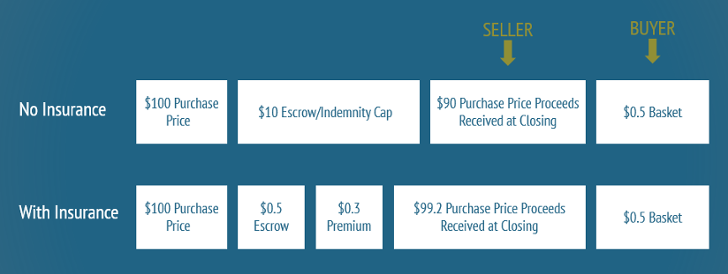Industry Trends
Largest Transactions Closed
- Target
- Buyer
- Value($mm)
Once you have identified a buyer and determined the purchase price for your company, it is time to negotiate the terms and conditions of the sale. These items are outlined in the purchase agreement, the primary legal document in any sale process.
This article will cover the key terms that will be most important to you, other than the purchase price. Understanding these terms will help you protect the proceeds from the sale of your company. What is most important is not the sale price but the amount of the proceeds you get to keep. Purchase agreements have many terms, but we’ll stick to some of the more complex issues.
The cap is the upper dollar limit of a seller’s indemnification obligations to the buyer―in other words, the total amount of losses and damages a buyer is entitled to recover from the seller. Fundamental indemnification claims are typically excluded from the cap. The cap is usually between 8% and 12% of the purchase price. Higher percentages are usually derived when companies have diligence issues.
Examples of items that would cause a claim include undisclosed liabilities, undisclosed commitments, and undisclosed issues with customer or supplier relationships.
Escrow is a portion of the purchase price that is placed in a third-party escrow account to serve as security for the acquirer for potential claims against the seller. An escrow is typically used to alleviate concerns about the seller’s financial ability to cover post-closing indemnity claims if they should arise. Escrows are usually equal to or less than the cap.
The escrow account process is straightforward. The seller puts a portion of the purchase price into an escrow account. If the buyer has a claim that exceeds the basket, they can make a claim to recover all or a portion of the funds they are seeking from the escrow.
It is important to note that escrow can be eliminated by using reps and warranties insurance.
Reps and warranties insurance is a contract between the buyer (or the seller) and an insurance company whereby the insurance company will indemnify the buyer for loss resulting from a breach of representations and warranties.
The insurance provides buyers and sellers with a powerful tool to shift the risk of financial loss that may arise from breaches of representations and warranties to the insurance company, giving the sellers certainty over sales proceeds and delivering the buyer many strategic benefits.
Representations and warranties insurance has been around for more than 13 years; however, in the past five years, its use has increased significantly.
This insurance is used in place of an escrow or holdback. The insurance company underwrites the policy based on the due diligence and representations and warranties in the purchase agreement.
There is a deductible―the basket―that needs to be met. Once this deductible is met, the insurance company would pay the buyer for any approved claims. One point that you should be aware of is that these policies usually exclude known due diligence issues.
Let’s compare two transactions: one with reps and warranties insurance, and one without. Both transactions have a purchase price of $100 million, and the proceeds go to the seller at close. 
The transaction without insurance, the seller indemnity cap, and corresponding escrow are assumed at 10% of the purchase price (or $10 million).
With insurance, the seller can reduce their escrow/indemnity cap to 0.5% of the purchase price (or $0.5 million) to satisfy half the retention under the policy assumed at 1% of the purchase price (or $1 million). We are assuming an insurance premium of $300,000.
As a result of the seller’s lower escrow/indemnity, the purchase price proceeds received at closing with insurance increase to $99.2 million as compared to $90 million with no insurance.
Again, a basket is defined as the amount beyond which the buyer can claim losses against the seller and/or the insurance company. In the “with insurance” scenario, it represents half the retention (or deductible); the other half is assumed to be met by the seller, as shown here.
These terms are critical when negotiating a purchase agreement; they define your financial exposure after the transaction closes. When you are negotiating a purchase agreement, it is important that you engage a team that is used to working with these types of agreements. PCE has worked on the sale of numerous companies, staying involved throughout the process. We view our involvement in the negotiation of the purchase agreement as one of the most essential tasks we perform. If you have questions, please contact us.
Investment Banking
mrosendahl@pcecompanies.com
New York Office
407-621-2100 (main)
201-444-6280 Ext 1 (direct)
407-621-2199 (fax)
Investment Banking
New York Office
201-444-6280 Ext 1 (direct)
mrosendahl@pcecompanies.com
Connect
201-444-6280 Ext 1 (direct)
407-621-2199 (fax)